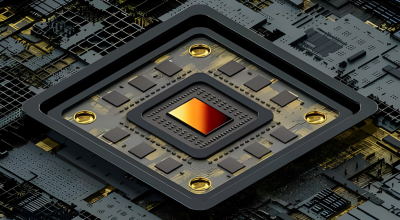Highlights:
- The NetApp AFF A20, AFF A30, and AFF A50 all-flash arrays are among the new systems that were unveiled and are part of the company’s AFF A-Series portfolio.
- According to NetApp, the new AFF A20, which has a capacity of as little as 15.35 terabytes per array, is targeted at clients wishing to start small or just expand their current storage infrastructure at remote and branch locations.
Data infrastructure company NetApp Inc. launched midrange all-flash arrays to update enterprise storage portfolio and bolster overall performance.
Additionally, it revealed additional enhancements to NetApp StorageGRID, its software-defined object storage hybrid cloud service, which will give users better density and performance.
The NetApp AFF A20, AFF A30, and AFF A50 all-flash arrays are among the new systems that were unveiled and are part of the company’s AFF A-Series portfolio. Similar to the more expensive models in that line, they are made to offer consumers cutting-edge features like submillisecond latency and 2.5 times the performance of the arrays from the previous generation that they replaced.
According to the company, further advantages include enhanced storage density, integrated real-time ransomware protection, and improved storage efficiency. The company’s primary storage management software, NetApp ONTAP, powers the new arrays.
In May, the business revealed its first AFF A-Series systems, claiming that they are made to speed up advanced workloads, optimize for storage prices, and remove storage silos and complexity. According to NetApp, they are a unified, all-purpose storage system that works with any type of data and can be integrated with any cloud or application.
Businesses may combine diverse workloads, save data costs, and function without silos due to their native integration with Amazon Web Services, Google Cloud, and Microsoft Azure, as well as their support for block, file, and object storage protocols.
According to NetApp, the new AFF A20, which has a capacity of as little as 15.35 terabytes per array, is targeted at clients wishing to start small or just expand their current storage infrastructure at remote and branch locations. While the AFF A50 is stated to offer the same capacity but twice the performance of its predecessor, in a considerably smaller chassis that takes up a third of the rack space, the AFF A30 increases the storage capacity to over one petabyte of storage for businesses wishing to start small and scale.
“The A-Series products are an intriguing new addition to NetApp’s portfolio as they bring flash storage to new segments of the enterprise,” Steve McDowell, an analyst reported. They enable flash to be put outside of huge corporate data centers in edge locations like remote and branch offices, where it hasn’t been particularly feasible to deploy such systems previously, because of their smaller physical footprint and lower required capacities.
“They are nice products, with NetApp managing to shrink the footprint significantly and reduce power consumption while providing a comparable level of performance to competitive offerings,” McDowell stated.
To provide more value for general-purpose applications across unified file, block, and object storage protocols, NetApp is expanding its AFF C-series lineup in addition to the A-series. They are made to be as dense and efficient as possible while having the ability to grow. According to NetApp, the new models—which include the AFF C30, AFF C60, and AFF C80 systems—make it easier for organizations to take advantage of the performance and efficiency improvements made possible by flash.
A two-rack deployment of the new C-series arrays may provide clients with up to 1.5 petabytes of storage capacity, according to NetApp. The arrays can save up to 95% of floor space and up to 97% of power when compared to the previous generation.
The new C-Series arrays, which introduce capacity flash into a market that has always been dominated by conventional hard drives, have wowed McDowell.
“They extend all-flash into nearline storage, where spinning hard drives still dominate,” the analyst said. “If this trend continues, then the days of hard drive dominance might be limited.”
According to Sandeep Singh, Senior Vice President and General Manager of enterprise storage at NetApp, the new arrays will assist businesses in meeting the ever-increasing capacity requirements of their IT workloads as well as the unrelenting growth of data volumes.
“Customers facing those challenges can rely on NetApp to deliver continuous innovation, illustrated by the release of the new more powerful, intelligent, and secure NetApp AFF A-Series systems and the new scalable, efficient, and secure NetApp AFF C-Series systems,” he added.
The goal of the upgrades to NetApp StorageGRID is to assist users in managing and scaling their expanding object storage workloads. With the ability to set up metadata-only and data-only nodes, StorageGRID version 11.9 offers enhanced flexibility, and higher bucket counts for increased scalability.
The program is currently being expanded to include 60-terabyte flash drives, which will enable it to support object storage deployments with double the density of previous versions.













